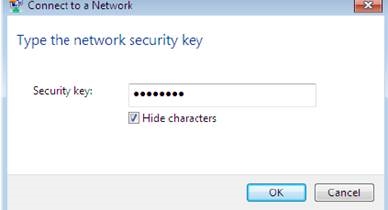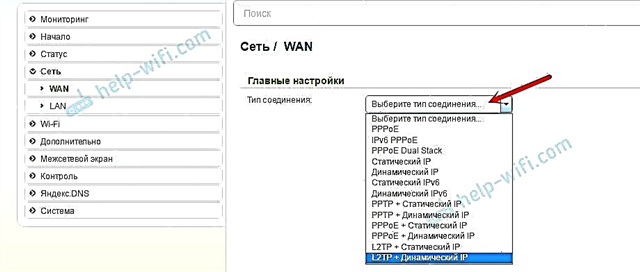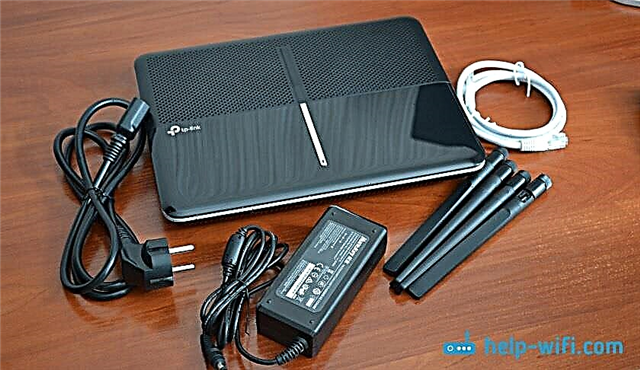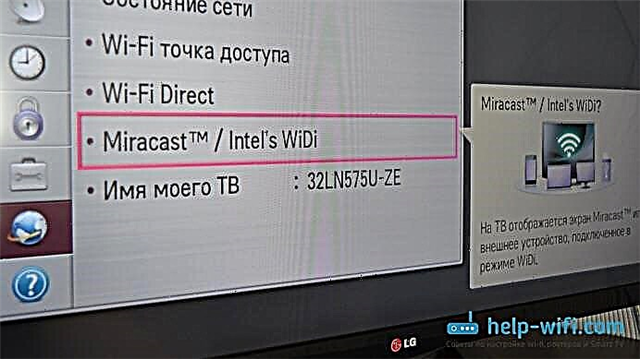The popular Wi-Fi CERTIFIED Miracast technology, better known to most users under the abbreviated name Miracast, belongs to the WI-FI Alliance. The technology was officially approved in September 2012. Miracast is the new standard for wireless multimedia transmission. The widely used WI-FI Direct technology was taken as a basis, but a number of differences and improvements distinguish Miracast favorably from other similar solutions.
The main goal of the developers was to greatly simplify the new technology. This allows any owner of a modern smartphone, tablet, or laptop that supports Miracast to play video or display game content on a compatible large-screen device, and this can be done with almost one touch and without using a cable. Today, most of the world's major manufacturers equip their mobile devices, laptops and LCD panels with Miracast technology.

In simple terms, this technology allows you to duplicate everything that happens on the screen of your phone, tablet, or laptop onto a large screen. For example, on the TV. It's about the same if you connected the device to a TV via an HDMI cable, but everything here is wireless, over the air.
How Miracast technology works
High-quality and full-fledged streaming with a complete lack of a wired connection has become the most affordable for modern monitors, TVs and projectors. With the help of Miracast technology, it was possible to expand the potential of the usual display media. The technology is available to every user and is extremely easy to use, completely open and compatible with any platforms and devices from various manufacturers that equip their products with Miracast support.
The main advantages of Miracast:
- wireless content transmission based on the IEEE 802.11n standard;
- direct communication without the participation of a router;
- minimizing delays and desynchronization during signal transmission;
- the ability to transfer content in 3D;
- ease of setup and interaction.
In order to carry out the transfer using the specified technology, you will need only two enabled compatible devices. One acts as a transmitter and the other functions as a receiver.
Solutions of similar functionality also need a Wi-Fi router, which causes a number of well-known inconveniences. For example, if one user decided to play an online game, and the other to watch a movie in HD format with content relaying through a router to TV, then both users will face certain problems. The problem lies in the large amount of data to transfer over the network, as well as on the settings of the router itself. In the event that the priority is game traffic, then the video will be played with a noticeable delay. If you prioritize the video stream, then there will be problems with the game.
For example, you can broadcast a movie from your phone to your TV using DLNA technology, but the fact is that this technology allows you to display only multimedia content (videos, films, play music) on a big tap. And the connection goes through a Wi-Fi router. And Miracast technology allows you to display everything that you see on the screen. Including displaying a picture during the game.

This technology works according to a fairly simple scheme. Devices with Miracast support communicate with each other using a special program (if you set up broadcast from a laptop), or through a special item in the settings of a mobile device. The next step is to activate the required playback mode: watching a video, displaying a copy of the smartphone display on the screen, etc. Devices paired with each other using Miracast technology communicate directly, they can independently form a secure and independent channel capable of transmitting any video information. Miracast can be called a kind of add-on over Wi-Fi Direct. The technology uses the H.264 compression standard, which allows the transmission of video signal in FullHD (1920 × 1200) format and multi-channel 5.1 audio in AC3 format.
The capabilities of Miracast technology are not limited only to the transfer of playable media files from one device to another. The technology allows you to display a complete copy of the display of a mobile device on the screen of a compatible TV or monitor. It is worth noting the implementation of the function of working in the opposite direction, which allows you to reproduce the picture from the TV screen on the display of your mobile gadget.
Miracast-enabled devices
First of all, it is worth noting those mobile devices that run on Android 4.2 Jelly Bean and above. Support for Miracast technology on such devices is implemented right out of the box (not at all). You need to look into the settings menu and find a software option called "Wireless Monitor" or "Wireless Display"... An example is the numerous tablets and smartphones brands LG, Samsung, Sony, Asus and others.

The next group of devices in the list of supporting Miracast technology are display devices. To a greater extent, this applies to modern LCD panels. Many manufacturers are integrating Miracast technology into their current TV models. The declared support for Miracast technology has been implemented in the Smart TV line from Phillips, Samsung, LG, etc.

If your TV does not have built-in support for wireless communication and does not support this technology, then you can purchase a third-party device that supports Miracast technology and simply connect it to the TV using a cable. Such a Miracast receiver. There are ready-made solutions on sale that are capable of receiving content using Miracast technology and transmitting it to a display device. Such solutions are compact in size and can be powered from the mini USB connector both on the TV itself and from any other power source. Similar devices are offered by Netgear, there are products from Sony.
Summing up
Miracast is affordable, convenient and very promising. This is evidenced by the significant support of this technology by giant companies Intel, AMD, NVIDIA, Qualcomm, MediaTek and others. Already today, many users consider Miracast a worthy alternative to replace the usual HDMI cable or Apple AirPlay technology. Gamers have appreciated the new wireless capabilities as Miracast has made it even more affordable to use the tablet as a gaming console.
If you already have devices supporting Miracast technology, we strongly recommend that you try this wonderful development in practice. If you don't have such gadgets yet, then don't be upset. This technology has every chance in the next couple of years to take the status of such a solution, which will become mandatory for all modern devices and display devices without exception.











